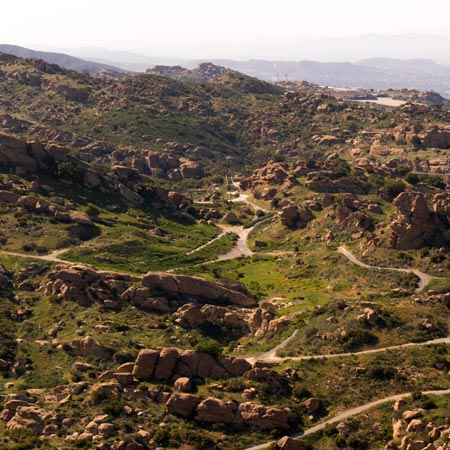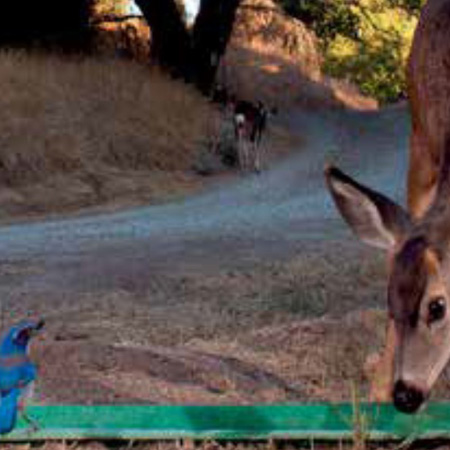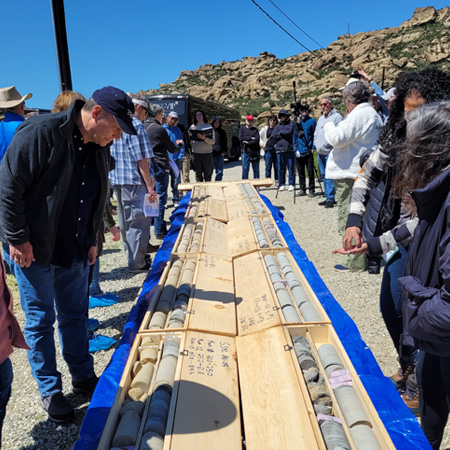
Cleaning, Restoring and Preserving
Together, we are moving forward with a safe and effective cleanup at the former Santa Susana Field Laboratory (Santa Susana), preserving it for future generations as open space. Santa Susana is a former rocket engine testing and energy research facility that sits within a key habitat linkage connecting California’s coast with inland mountain ranges. It is home to abundant wildlife, rare plant species, and Native American cultural resources.
Boeing agreed to the comprehensive framework developed by the California Environmental Protection Agency (Cal EPA) to implement a clear and accelerated plan for the stringent cleanup of Santa Susana. The cleanup framework protects the important biological and cultural resources at the site, which will never be developed under a conservation easement. It also reflects Boeing’s deep commitment to safety, sustainability, and the communities where we live and work. We surveyed thousands of community members who live closest to the site and the survey results indicate overwhelming support for our Agreement with the State, with 79% of respondents voicing affirmative support.
Please take a few minutes and click on the “Take Action” link to submit a supportive comment asking our regulatory agency, the California Department of Toxic Substances Control, to move the cleanup forward and to approve the protective soil cleanup remedy that preserves the site as open space habitat. The cleanup should not be delayed further — your comment can help ensure the process continues without unnecessary postponement. Please submit your comment by October 30.
Take Action
News and Events

Open Space Future
Santa Susana sits within a key habitat linkage connecting California’s coast with inland mountain ranges and is home to Native American cultural resources, abundant wildlife and endangered plant species. We announced 10 years ago we would preserve Santa Susana as open space. That promise is now a reality.

Wildlife Habitat Council
The Wildlife Habitat Council honors corporate excellence in broad-based biodiversity enhancement and conservation education activities. They recently recertified Santa Susana as “gold,” the highest level possible, and presented two awards to the site. It was profiled in our Fall 2024 newsletter.

Wildlife Around the Watering Hole
Santa Susana is home to more than 150 bird species, a couple dozen mammals, including 12 bat species, dozens of reptiles and amphibians, a host of pollinators and hundreds of plants and flowers. Some special status species onsite include Golden eagles, Townsend’s big-eared bats, Western Spadefoot toads, Braunton’s milk vetch and mountain lions. Check out the wildlife that frequent Santa Susana.

Studying Groundwater Onsite
Groundwater investigation efforts at Santa Susana have been conducted over several decades. DTSC, in cooperation with Boeing, NASA and the U.S. Department of Energy (DOE), held a series of classes called Groundwater U to teach stakeholders about groundwater remediation investigation activities. Groundwater U was profiled in our Summer 2024 newsletter.
A Bright Future for Santa Susana
The restoration of the Santa Susana landscape is well underway; native plants and animals have already reclaimed much of its 2,850 acres. Due to its past sensitive government work, Santa Susana has remained in many ways protected and isolated — one of the most intact and vast natural areas (or wildlife linkages) right in the middle of the urbanization of the immensely populated Simi and San Fernando Valleys.
Santa Susana remains a site of historic significance with towering rocket engine test stands on NASA-administered land and Native American artifacts throughout the property. After restoration is complete, Santa Susana will continue to be a place where mountain lions roam free, cultural artifacts remain undisturbed, and oak woodlands have the opportunity to thrive. Boeing secured a conservation easement that forever protects the site's vast natural and cultural features, and permanently preserves nearly 2,400 acres at the site.
A Comprehensive Cleanup
Since becoming the majority landowner in 1996, Boeing has made considerable progress cleaning up and restoring Santa Susana. After decades of soil, groundwater and stormwater investigation activities, we have worked under the oversight of, or in coordination with, state and federal regulatory agencies and:
- Removed 95,000 cubic yards of soil and debris;
- Tested more than 38,000 soil and groundwater samples;
- Decommissioned, demolished and disposed of 300 structures, in accordance with state and federal regulations;
- Installed over 270 groundwater monitoring wells;
- Erected a state-of-the art groundwater extraction treatment system;
- Installed two state-of-the-art stormwater treatment systems;
- Installed an award-winning biofilter and bioswale for stormwater treatment;
- Replanted 900 acres of native plants to restore watershed and habitat
We have taken proactive measures to address legacy contamination and ensure the continued safety of the surrounding community. In 2022, Boeing agreed to the comprehensive framework proposed by the Cal EPA to implement a clear and accelerated plan for cleanup at the former site. Since signing those agreements, Boeing has removed 50,000 cubic yards of contaminated soil from the site in two areas – the former employee shooting range at the adjacent Sage Ranch and the onsite Area I Burn Pit. That’s enough soil to fill nearly 5,000 standard sized dump trucks.
The framework involves two state agencies - the Department of Toxic Substances Control (DTSC) and the Los Angeles Regional Water Quality Control Board (Los Angeles Water Board) - and provides Boeing with a clear process, schedule, and criteria for future decision-making at Santa Susana. The framework also accelerates cleanup, reduces the potential for technical disputes and establishes a process to resolve them quickly, avoiding delays from litigation. When complete, the cleanup will be one of the most stringent ever ordered in California.
Federal and state laws require that sites be cleaned up to limit risks to human health and the environment based upon current and future land use. Boeing’s agreement with the state goes beyond this level given that Boeing’s property will remain open space forever and never be developed under an irrevocable conservation easement.
Key Elements of the Cleanup Framework
- Boeing has agreed to clean radionuclides in soil to “background” levels in its areas of responsibility;
- Given the potential for extreme weather due to climate change, Boeing has agreed to start cleanup of the Area I Burn Pit, currently covered by a geotextile fabric, as soon as Spring 2023;
- Boeing has agreed not to contest DTSC’s selection of a broad range of cleanup standards including a resident with garden exposure standard. Under that standard, soil would be remediated to allow people to live onsite and consume produce from a backyard garden even though the site will be preserved as open space;
- Boeing has agreed, following completion of its soil cleanup, to conduct years of post-cleanup monitoring and prepare a Human Health Risk Assessment, to demonstrate that runoff from its areas of concern is not polluted;
- The DTSC Settlement Agreement processes include safeguards to protect important environmental and cultural resources at the site; and,
- The expedited timeline, streamlined process, and dispute resolution procedure in the DTSC Settlement Agreement will accelerate the cleanup.
More information about the comprehensive agreement can be found on the Cal EPA website.
Videos
In Their Words
Santa Susana is uniquely positioned at the intersection of biological, cultural, ecological, and historical significance… Many individuals and groups currently use the site for research, education, and inspiration.
These are their words.
